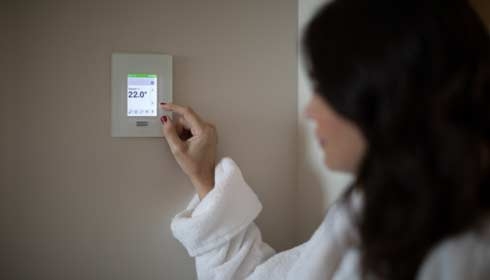A building automation system (BAS) allows an operator to access, control, and monitor all connected building systems from a single interface. With BAS technology, you can gain centralized control over your building’s systems via networked electronic devices. In the past, fine-tuning HVAC, lighting, power, and access control systems required extensive manual effort. With new building automation solutions, you not only integrate these historically siloed systems, you also gain visibility and control over them from a single view. That streamlines decision-making and saves you time.
Another key benefit of building automation is that it resolves the long-standing competition between more comfort versus more efficiency. With reams of new data, you can make informed decisions about how to best reduce or eliminate energy waste. For example, if rooms are unoccupied, you can turn the lights off or reduce HVAC output until the occupants return. And when they do return, occupants gain greater control over their living spaces via app-based room controls. The result is lower costs and greater comfort.
Anatomy of a Building Automation System
While building automation systems are configured to meet the specific needs of a building and its occupants, each shares the following elements:- 1. Software
- 2. Field controllers
- 3. A communication bus
- 4. Network controllers
- 5. Downstream end-devices for occupant control (thermostats, room controllers)
Building Automation & Control Products
Building Facts

42% of the world's energy is used in buildings.

50% of energy used in buildings is wasted because of inefficient building management systems.

In developed economies, at least half of the buildings expected to be in use in 2050 have already been built.

Only 25% of building costs are associated with capital expenses, while 75% of costs are used to operate a building over its life cycle.

Only 20% of facility managers use 80% of the available capabilities in their building management systems.

30% of energy used in buildings is waste.













